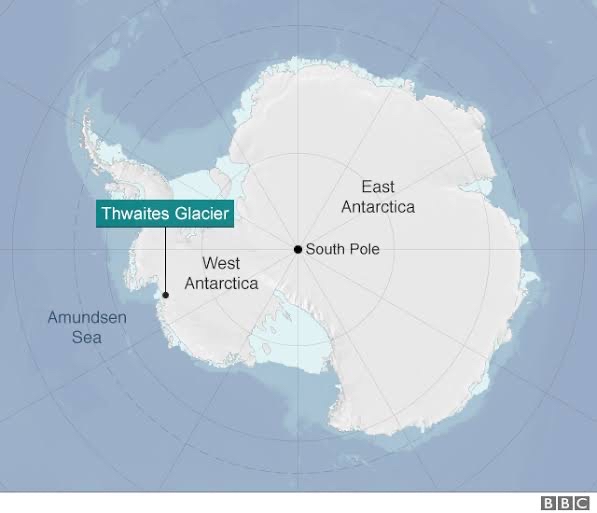ForumIAS announcing GS Foundation Program for UPSC CSE 2025-26 from 19 April. Click Here for more information.
ForumIAS Answer Writing Focus Group (AWFG) for Mains 2024 commencing from 24th June 2024. The Entrance Test for the program will be held on 28th April 2024 at 9 AM. To know more about the program visit: https://forumias.com/blog/awfg2024
What is the News? Researchers at Sweden’s University of Gothenburg releases a new finding related to the melting of the Thwaites Glacier. They found that the melting was worse than previously thought.
About Thwaites Glacier:

- Thwaites Glacier is a 120 km wide, fast-moving glacier located in Antarctica.
- Size: Because of its size (1.9 lakh square km), it contains enough water to raise the world sea level by more than half a meter.
- Melting: Its melting already contributes 4% to global sea-level rise each year. It is estimated that it would collapse into the sea in 200-900 years.
- Studies have found the amount of ice flowing out of it has nearly doubled over the past 30 years.
- Significance: Thwaites Glacier is important for Antarctica as it slows the ice behind it, from freely flowing into the ocean. However, because of the risk it faces — and poses — Thwaites is often called the Doomsday Glacier.
About the Study:
- Gothenburg study used an uncrewed submarine called “Ran” to go under the Thwaites’ glacier front to make observations.
- The researchers measured the strength, temperature, salinity, and oxygen content of the ocean currents that go under the glacier.
- Findings: The study found that warm water is approaching the glacier from all sides. It is impacting the locations where the ice connects to the seabed and where the ice sheet finds stability. This has the potential to make things worse for Thwaites, whose ice shelf is already retreating.
Earlier Studies:
- Cavity in the Glacier: A 2019 study had discovered a fast-growing cavity in the Thwaites’ glacier. It’s size was roughly two-thirds of the area of Manhattan.
- A cavity is created by relatively warm ocean water melting the ice shelf. As the glacier becomes exposed to more warm-water currents, the ice will probably melt faster.
- Detection of Warm Water at Grounding Line: In 2020, researchers from New York University(NYU) detected warm water at Thwaites’ “grounding zone” or “grounding line”.
- The Grounding Line is the place below a glacier at which the ice transitions between resting fully on bedrock and floating on the ocean as an ice shelf. The location of the line is a pointer to the rate of retreat of a glacier.
- When glaciers melt and lose weight, they float off the land where they used to be situated. When this happens, the grounding line retreats. That exposes more of a glacier’s underside to seawater, increasing the likelihood it will melt faster.
- This results in the glacier speeding up, stretching out, and thinning, causing the grounding line to retreat ever further.
Source: Indian express




